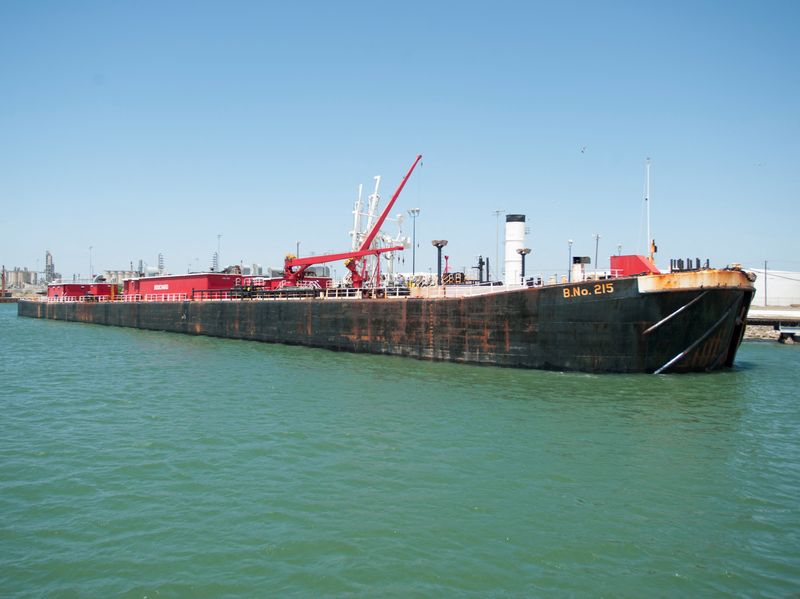
© Reuters. FILE PHOTO: A seagoing barge is loaded with crude oil from the Eagle Ford Shale formation at the newly expanded crude dock at the Port of Corpus Christi, Texas, April 10, 2014. REUTERS/Darren Abate/File Photo
CL
-0.75%
Add to/Remove from Watchlist
Add to Watchlist
Add Position
Position added successfully to:
Please name your holdings portfolio
Type:
BUY
SELL
Date:
Amount:
Price
Point Value:
Leverage:
1:1
1:10
1:25
1:50
1:100
1:200
1:400
1:500
1:1000
Commission:
Create New Watchlist
Create
Create a new holdings portfolio
Add
Create
+ Add another position
Close
LCO
-0.68%
Add to/Remove from Watchlist
Add to Watchlist
Add Position
Position added successfully to:
Please name your holdings portfolio
Type:
BUY
SELL
Date:
Amount:
Price
Point Value:
Leverage:
1:1
1:10
1:25
1:50
1:100
1:200
1:400
1:500
1:1000
Commission:
Create New Watchlist
Create
Create a new holdings portfolio
Add
Create
+ Add another position
Close
By Georgina McCartney
HOUSTON (Reuters) – Oil is flooding out of Texas in the final weeks of 2023, as traders find outlets abroad for record U.S. production and dodge a hefty year-end tax bill on their inventories.
U.S. crude exports, nearly all of which leave from the U.S. Gulf coast, averaged about 4 million barrels per day (bpd) so far this year, according to U.S. government data, about 500,000 more than last year’s record as oil production climbed to 13.2 million barrels per day.
U.S. West Texas Intermediate crude’s wider discount to the global benchmark Brent, currently at about $4.50 per barrel, is making U.S. oil more attractive to European and Asian refiners.
“Flows bound for Asia are looking to finish the year strongly, particularly for cargoes heading to China,” said Matt Smith, an analyst with ship tracking firm Kpler.
U.S. Gulf Coast crude inventories fell 1.2% to 247.9 million barrels last week, the third straight week of declines, in part due to strong exports. Storage utilization stood at about 63% of total working capacity along the coast, lower than average utilization in prior years.
Another factor driving the exodus is an end-of-year tax on oil held in storage in Texas.
U.S. crude exports will likely average around 5 million bpd in the last two weeks of the year as that tax consideration drives barrels out of the Gulf coast, according to Kpler’s Smith.
Those that cannot move barrels on water will look to ship oil to places where the tax is lower, like the massive storage hub in Cushing, Oklahoma.
In Oklahoma, the tax rate is around 1%, while in Texas it is around 2.50% to 2.75%, according to energy research firm Energy Aspects.
Inventories at Cushing have climbed for eight straight weeks this month to 30.8 million barrels from 21 million barrels.
Source: Investing.com


























